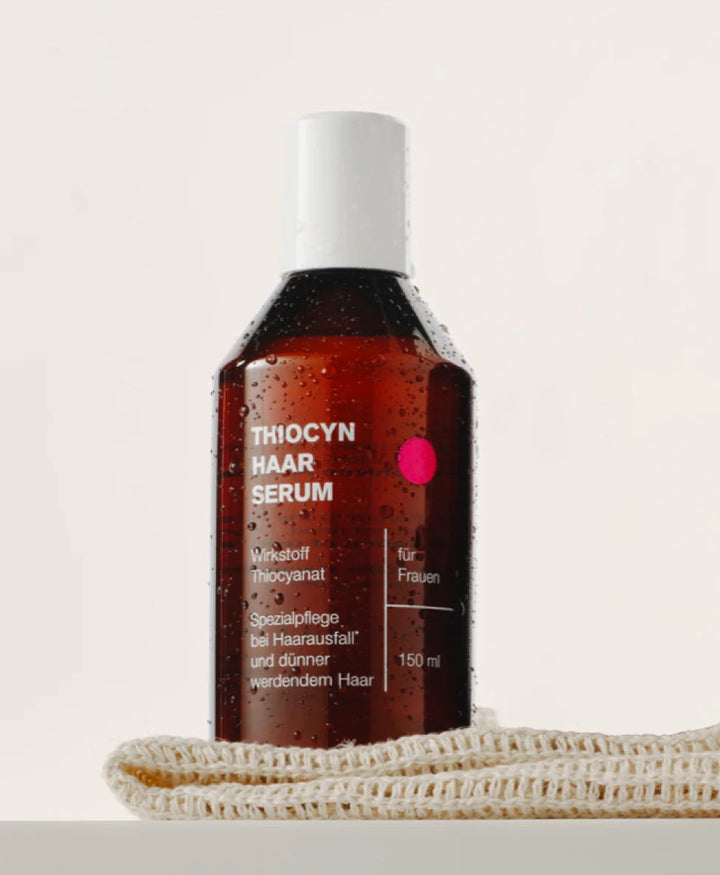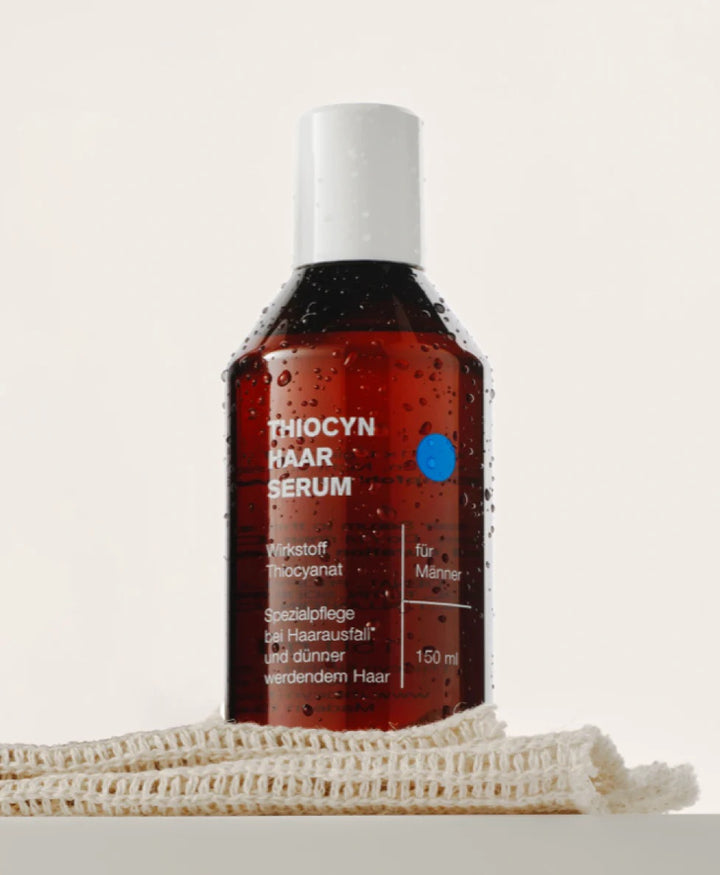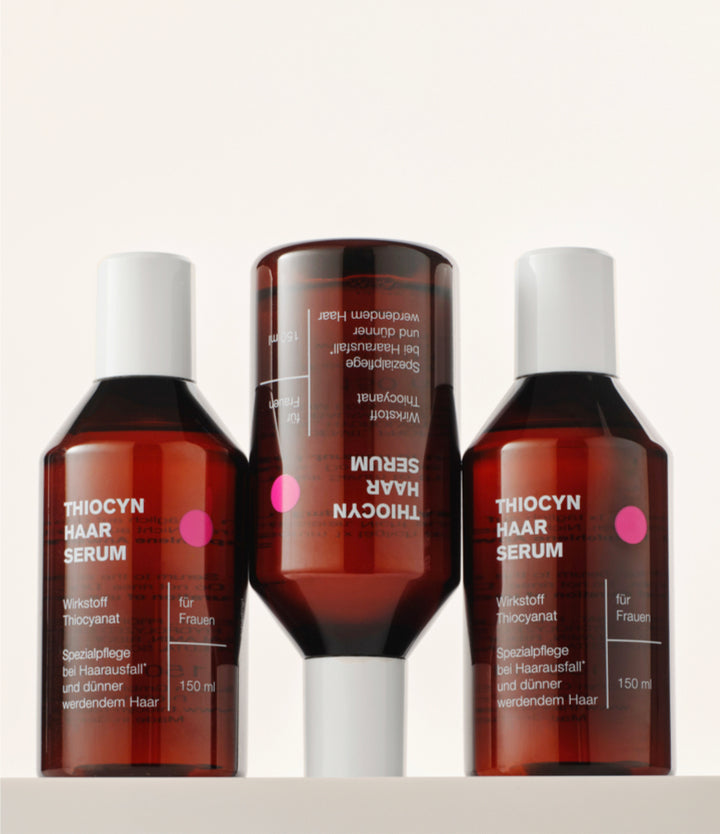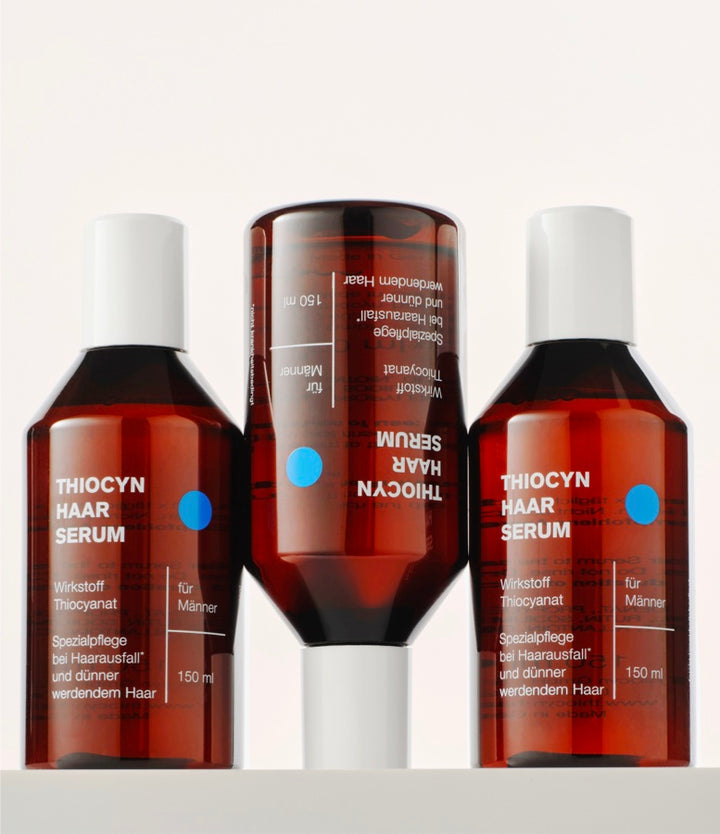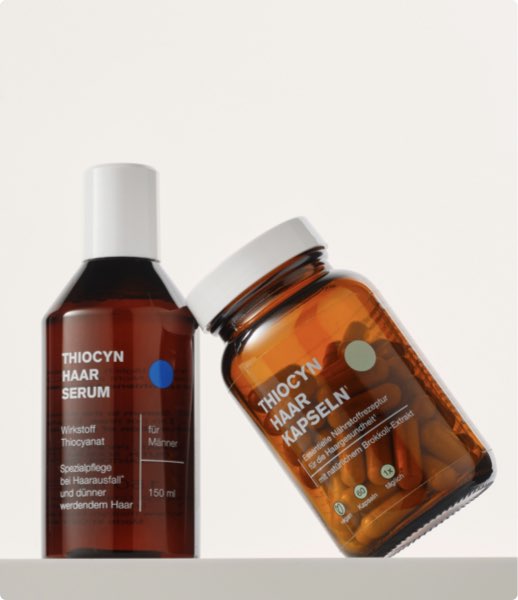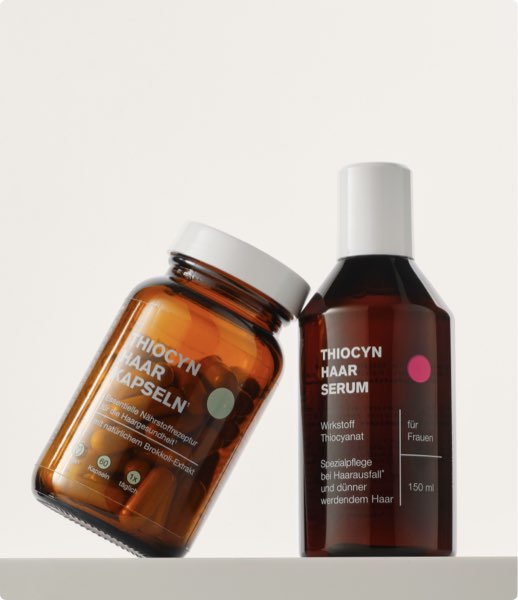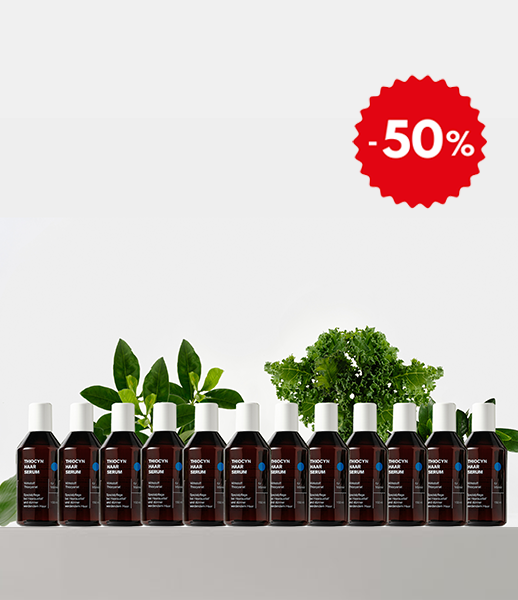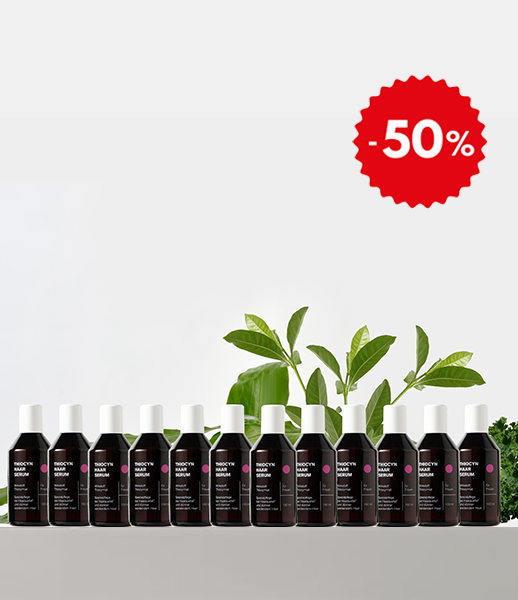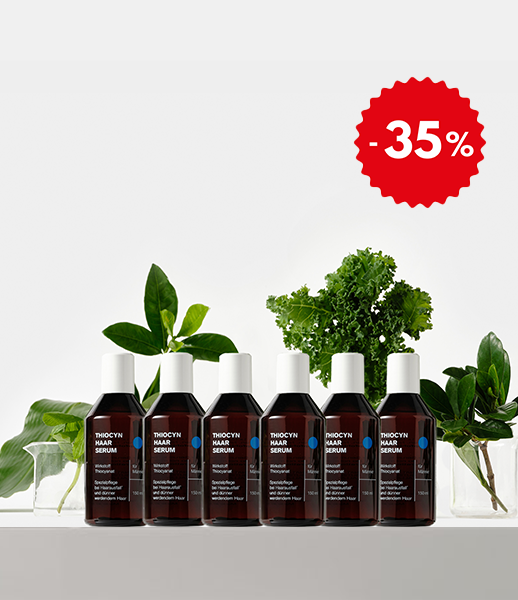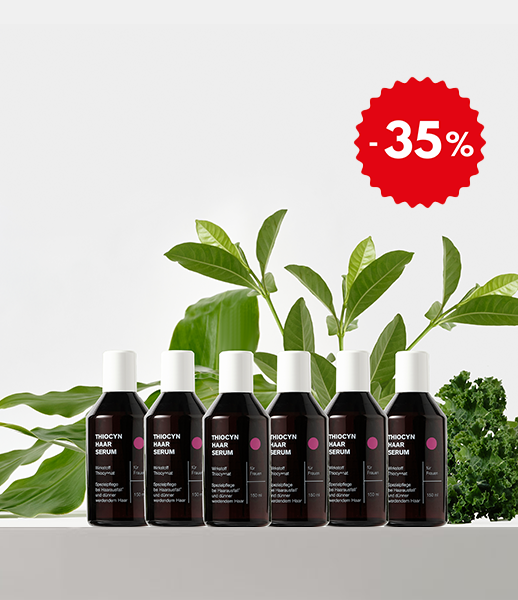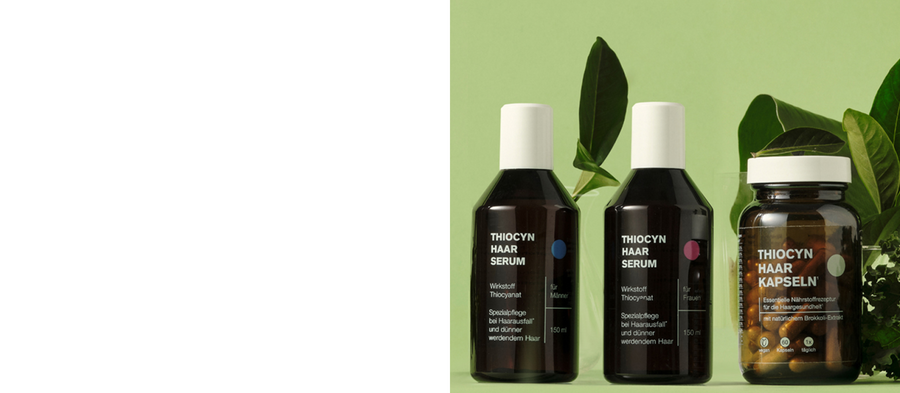| 04. July 2023
Promote hair growth in a very natural way

- In order to grow, our hair depends on nutrients.
- Nutrients for hair growth: Proteins, glucose, minerals, vitamins.
- Hair loss occurs when one of these components is permanently missing.
- Surprising discovery: Thiocyanate in plant foods.
- Promote healthy hair growth: also with thiocyanate.
Promoting hair growth: The body doesn't need superfoods for this. Our hair actually just needs a balanced diet. The finest blood vessels in the scalp then supply the hair follicles with proteins, glucose, minerals, and vitamins, not least thiocyanate. The interplay of all these building and functional substances, as well as energy, ultimately leads to hair growth.
Promote hair growth – from within
Hair grows between 10 and 15 cm each year, but only if the hair follicles, our hair factories, produce approximately 0.3 mm of hair substance every day. Hair growth, specifically cell division and cell growth, as well as the structure of our hair with its cuticle, cortex, and medulla, is only possible through the precise interplay of the following nutrients:
Proteins for building hair substance
Animal products such as eggs, meat, fish, and dairy products provide essential amino acids like cysteine for the production of keratin, the main component of our hair. Those who follow a vegetarian or vegan diet meet their protein needs with legumes or soy products.
Glucose as an energy source for hair production
Our body obtains energy in the form of carbohydrates. Carbohydrate molecules in bread, potatoes, vegetables, fruit, rice, or pasta are broken down into glucose in the gastrointestinal tract and used in cellular metabolism at the hair roots.
Minerals as hair building blocks
Major elements include calcium, sodium, and magnesium. Sulfur is a component of the amino acid cysteine. Certain sulfur molecules (disulfide bridges) contribute to the formation and stabilization of protein structures in hair keratin.
Trace elements for energy utilization
Trace elements are also minerals, but in lower concentrations. As a component of hemoglobin in the blood, iron enables oxygen transport to the cells. Iron is found in green vegetables, whole grain products, and meat. Zinc, on the other hand, plays a key role in protein metabolism. Zinc enters our bodies through the consumption of soybeans, cheese, or liver.
Vitamins to control biochemical processes
Vitamins As functional substances, they help in the utilization of nutrients. Vitamin B7 Biotin plays an important role in protein metabolism for the production of hair keratin. A balanced diet provides enough biotin for hair through daily intake. Vitamin C in citrus fruits ensures that the trace element iron reaches the body's cells.
Surprising discovery: Thiocyanate
Vegetables are also an important source for supplying our body with ThiocyanateApproximately 60 to 70% of the thiocyanate present in the body is produced by the body itself. The remainder is absorbed primarily through vegetables. Foods with high thiocyanate content include brassicas such as cauliflower, broccoli, red cabbage, kale, kohlrabi, savoy cabbage, as well as chickpeas, sweet potatoes, cashews, and cress.
What does thiocyanate do?
Thiocyanate is a bioactive molecule and an important component of cellular metabolism throughout the human body, not least at the hair roots, where hair is formed from keratin-rich horny cells. Thiocyanate counteracts growth-inhibiting influences on hair cellular metabolism through targeted detoxification of oxygen radicals, allowing hair follicles to build hair substance as smoothly as possible.
Promote hair growth: from the outside
If the hair lacks thiocyanate due to unbalanced or inadequate nutrition, it can be supplemented externally. As the most important ingredient in the patented active formula in Thiocyn Hair Serum, thiocyanate helps to restore thinning or thinning hair to prevent and reduce hair loss*.
Daily use of the patented thiocyanate active formula is particularly valuable, given modern hygiene standards. Repeated long showers regularly flush valuable thiocyanate from the scalp. Daily use of Thiocyn Hair Serum, especially after shampooing, can effectively compensate for the thiocyanate deficiency.

Step 1
Before using Thiocyn Hair Serum for the first time, unscrew the cap and attach the applicator to the bottle. Wash your hair as usual. Gently dry your hair and scalp with a towel.
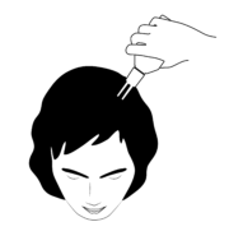
Step 2
Gently comb through damp hair with the applicator. The hair serum will flow naturally from the bottle, moisturizing your scalp.
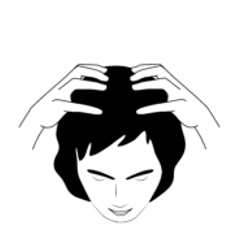
Step 3
Massage Thiocyn Hair Serum into your scalp for approximately one to two minutes. This natural, endogenous molecule will reach the hair roots, improving scalp circulation.
Do not rinse your hair after use, but dry, blow-dry or style your hair as usual.
Read by 23,000 people
Do it like 23,000 others and find out how you can improve your hair health - with great offers and discounts as well as helpful advice
